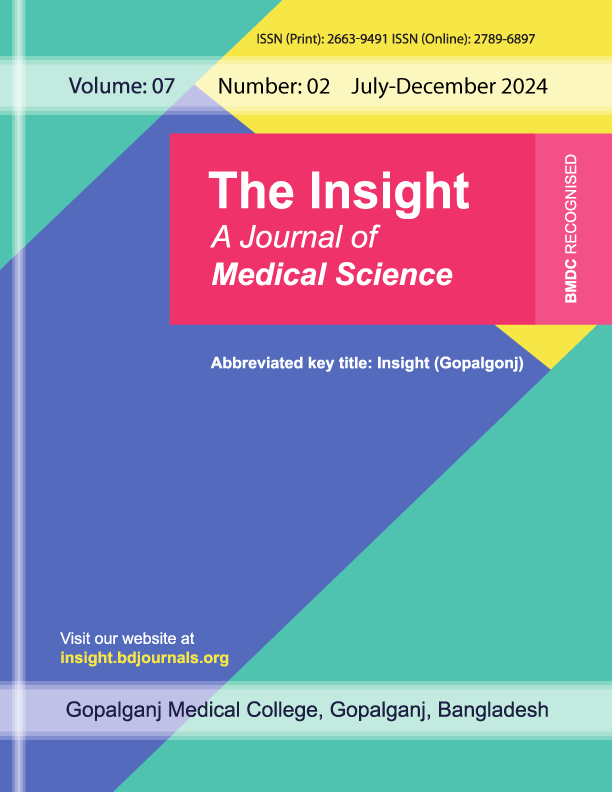Determining the Relationship between the Severity of Carotid Stenosis and High-Risk Factors
Publiée 2025-07-07
Mots-clés
- Stenosis,
- Ultrasonography,
- Hypertension,
- Dyslipidemia,
- Stroke
(c) Copyright The Insight 2025

Ce travail est disponible sous la licence Creative Commons Attribution 4.0 International .
Comment citer
Résumé
Background: Stroke, predominantly ischemic, remains a major global health concern, often resulting from carotid artery stenosis (CAS). CAS severity increases with age and high-risk factors like hypertension, diabetes, and smoking. This study explores the relationship between CAS severity and these risk factors among elderly patients in a resource-limited setting. Methods & Materials: This cross-sectional study was conducted over six months (September 2012–February 2013) at BSMMU, Dhaka. One hundred patients aged >55 years with one or more high-risk factors were enrolled through convenient sampling. Carotid Doppler ultrasonography assessed stenosis severity. Data were analyzed using SPSS, with significance set at p < 0.05. Result: In this study of 100 elderly high-risk individuals, the mean age was 65.63 ± 8.13 years, with most patients aged between 51 and 70 years. Males comprised 64% of the population. A large proportion were sedentary (89%), occasional exercisers (96%), and smokers (63%). Common comorbidities included hypertension (64%), dyslipidemia (58%), ischemic heart disease (42%), and transient ischemic attack (39%). Family history revealed hypertension in 59% and diabetes in 36%. Carotid Doppler findings showed 73% had stenosis, mostly mild (60%). Statistically significant associations with carotid stenosis were found for hypertension (p=0.04), dyslipidemia (p=0.04), IHD (p=0.01), and TIA (p=0.03), while the association with IFG/IGT/DM was not significant (p=0.08). Conclusion: A significant proportion of high-risk elderly patients had carotid artery stenosis, with hypertension, dyslipidemia, IHD, and TIA showing strong associations. These findings underscore the importance of targeted screening using Doppler ultrasonography to facilitate early detection and prevention of stroke in resource-limited settings.



